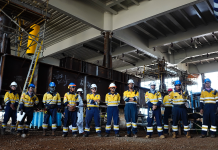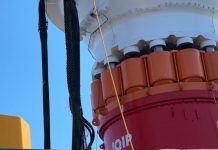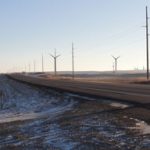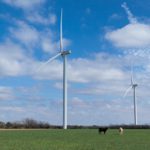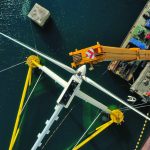At planned wind tower sites a geotechnical investigation and/or environmental evaluation should first be performed to characterize the underlying soils. The results of these investigations may determine if a project can proceed, and they will influence many decisions throughout the design and developmental phase. During site exploration identification of a near-surface organic layer, excessively soft soils, or environmental contamination can have a major impact on the suitability of a site for wind tower construction. These “red flags” have the potential to halt a project or require deep foundations or innovative ground improvement technologies such as mass stabilization.
Mass stabilization is a soil mixing technology developed to treat near-surface weak soil (soil mixing technology was detailed in the May 2010 installment of this column, which is available at www.windsystemsmag.com). Mass stabilization was developed in Sweden, Finland, and Japan in the 1960s, and it has been used abroad extensively for road and railway projects over peaty (organic) soils and for land reclamation and environmental applications. In the United States mass stabilization has been used for roadway, building, and tank support, as well as to stabilize sludge ponds at petrochemical plants.
The goals of most ground improvement programs at wind tower sites are to improve bearing capacity, limit settlement, and/or mitigate potential seismic hazards of the planned wind tower, where applicable. Mass stabilization can address these issues in shallow soils less than 20 feet below ground surface. The presence of contamination may require additional environmental criteria. Having been utilized extensively as an environmental remediation technique, mass stabilization can improve strength characteristics of a soil while also reducing permeability/leachate potential and fixating contamination in place.

The product of mass stabilization is a stiffened mat of soil-cement, often referred to as “soilcrete.” This mat of soilcrete is composed of individually mixed “cells” and is constructed beneath a proposed structure, such that loads are transferred primarily in axial compression through the mixed soils to a deeper, more-competent soil stratum.
Construction is executed using a purpose-built power mixing tool. This tool resembles a large drum with protruding blades that spins on a horizontal axis mounted to the end of a sturdy steel shaft. Pinned to a hydraulic excavator, the power mixing tool rotates the drum while penetrating the ground to mix a soil mass. A binder delivery tube and outlet introduces a binder at the drum of the power mixing tool. Pneumatic or hydraulic delivery methods transfer the binder through the delivery tube and into the soil mass. Binder materials include lime, cement, fly ash, slag, and admixtures. Soil type, groundwater location, and the presence of contamination will determine the types and dosage required of the binder options. Accordingly, an early step in most mass stabilization projects is the collection of site soil samples followed by laboratory-prepared trial mixes and laboratory tests to determine the effectiveness of the binder materials and the quantities required to meet project goals.
Quality assurance and control (QA/QC) should be implemented for every phase of a successful mass stabilization program. A proper QA/QC program should include pre-production field sampling and laboratory testing, electronic metering and tracking of construction materials, post-production sampling, and load and penetration testing. An onboard data acquisition system is fitted to the mass stabilization rig to monitor binder dosage and mix parameters such as cell identification, working grade, binder dosage rate and pressure, tool RPM, total quantity of binder added during mixing, and mix depth. Because soilcrete performs as strong soil, the final product is most appropriately evaluated from the geotechnical engineer’s perspective.
Foundation system options for new construction may be complicated by weak and organic soils or environmental contamination. Mass stabilization is a cost-effective solution for treating potential wind tower sites with these weak organic soils and high groundwater conditions.

















